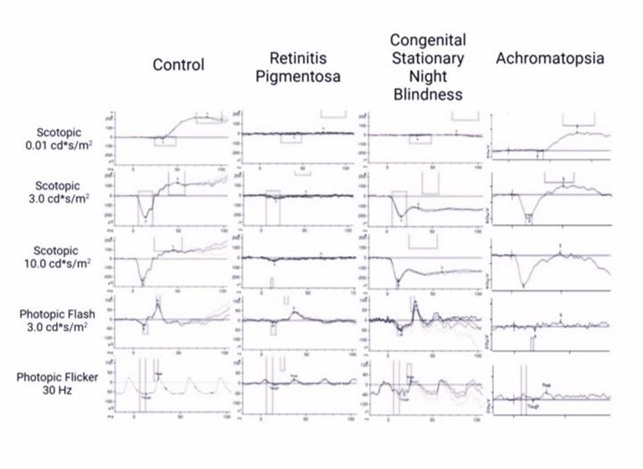-
 By Gabrielle Hallai
By Gabrielle Hallai
Cleveland Clinic - Uploaded on May 13, 2024.
- Last modified by Joshua Friedman on May 14, 2024.
- Rating
- Appears in
- Miscellaneous
- Condition/keywords
- electroretinography, full field ERG, retinitis pigmentosa, congenital stationary night blindness (CSNB), achromatopsia
- Photographer
- Gabrielle Hallai, PhD, Cleveland Clinic Cole Eye Institute
- Imaging device
- Diagnosys ColorDome
- Description
- The left most column are control full field ERG responses from an individual with no known retinal pathology. In the second column is an example from a patient with autosomal recessive retinitis pigmentosa. This is an example of an intermediate case where rod function is extinguished but some cone function remains. In more advanced cases, full field ERG responses are typically extinguished to both scotopic and photopic stimuli. The third column is an example of congenital stationary night blindness (CSNB). While full field ERG responses can vary greatly depending on the specific subtype, this example of “complete CSNB” demonstrates extinguished rod pathway responses with the classic electronegative response for the scotopic 3.0 and 10.0 responses, consistent with bipolar cell dysfunction. Photopic cone responses are largely normal in this instance, but ”incomplete CSNB” can cause reduced photopic responses. In the final column, an example of full field ERG responses from a patient with achromatopsia. In achromatopsia, cone function is extinguished early in life, while rod pathway function is largely normal. ERG testing was completed using the Diagnosys ColorDome.


 Initializing download.
Initializing download.


---thumb.jpg/image-square;max$79,0.ImageHandler)







